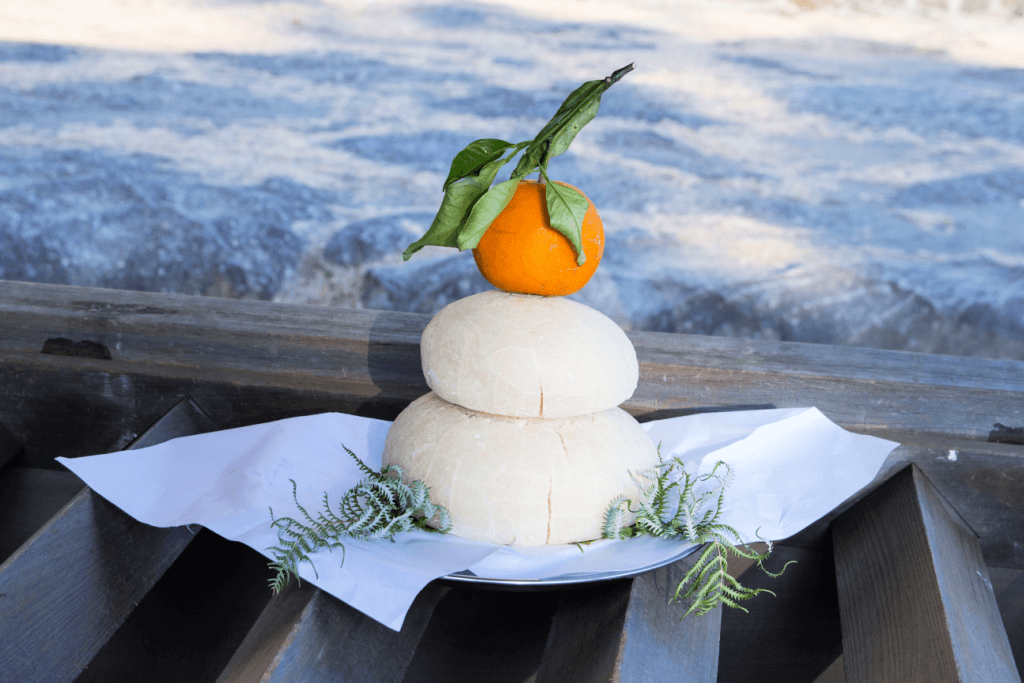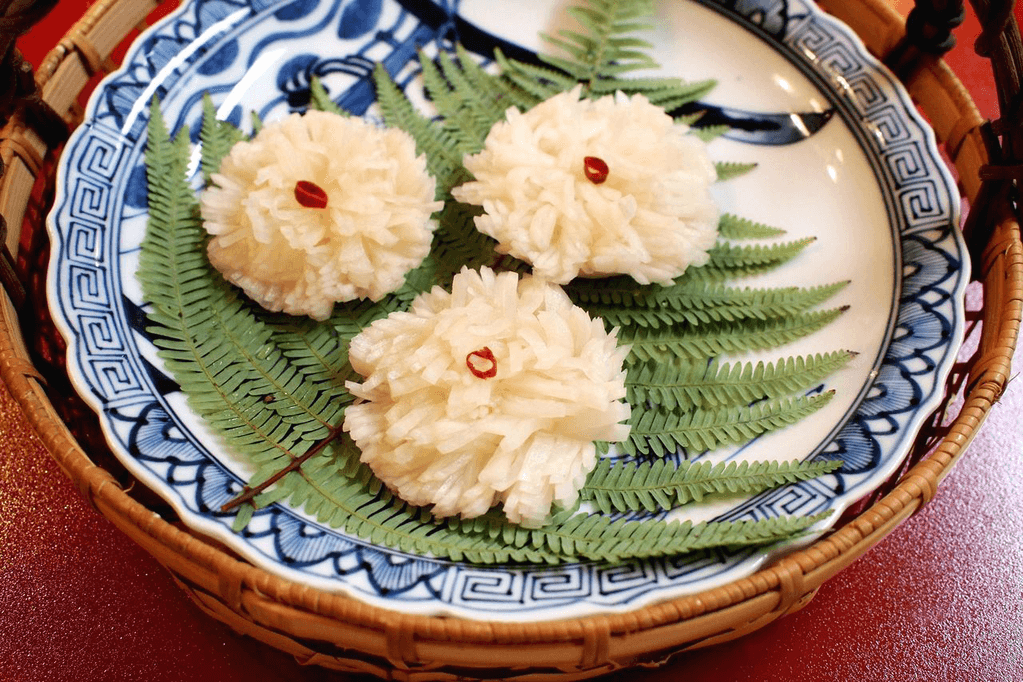As the New Year approaches, why not refresh your memory on some traditional Japanese New Year’s foods that will surely be on the menu? From the popular oshiruko to toshikoshi soba, there’s something for everyone to enjoy for the New Year! Let’s look at five of the most popular that Japan celebrates the New Year with!
Table of Contents
ToggleOshiruko
Oshiruko, or zenzai, is a traditional Japanese dessert soup made with sweet azuki beans and mochi (rice cake). Many people enjoy this wintertime treat, featuring warm, slightly sweet, and earthy flavors. Vending machines offer oshiruko as a sweet red bean drink.
In East Japan, zenzai refers to chunky red bean soup, while oshiruko is a soupy red bean soup without beans. In the West, chunky and fine red bean soups are called “zenzai”. Generally, people can make the soup with pre-made anko, tsuban, or koshi-an, and they often serve it with mochi or dango, adding extra texture to the dish.

Sometimes, sweet red bean paste can give the soup a thicker texture. For the mochi, kirimochi, a harder mochi toasted for a crunchy outside and chewy inside, is common. In contrast, Old New Year mochi, like kagami mochi, is also famous and adds a seasonal taste. For those who may find sweet azuki beans too strong, locals often pair it with something sour like umeboshi.
Toshikoshi Soba

Toshikoshi soba, or year-crossing noodles, is a special Japanese dish on New Year’s Eve. It’s buckwheat noodles in a hot dashi broth and is often topped with finely chopped scallions. The long noodles symbolize longevity, and slurping them up is believed to bring good luck and strength for the new year. The tradition of eating toshikoshi soba on New Year’s Eve has existed since the Edo Period. Overall, this dish is a meaningful way for the Japanese to welcome the new year with positivity and hope.
Kagami Mochi
Kagami mochi is a traditional Japanese New Year decoration. It consists of two round mochi, one small and one large, with a daidai, or Japanese bitter orange, on top. The mochi is placed on a stand over a sheet called shihōbeni, which people believe prevent fires for the coming years. The daidai represents the passing of time and the growth of a family through generations. “Kagami mochi” comes from a sacred old-fashioned bronze mirror, symbolizing happiness and fortune for good luck.

People set up this New Year’s treat around December 28th. They don’t eat it immediately but in a traditional kagami biraki ritual on January 11th. They break it up with a hammer during this ritual to bring good fortune. While most people traditionally make it at home, it is common in supermarkets or convenience stores. Kagami mochi generally symbolizes New Year traditions in Japan, representing hope, luck, and the continuation of family blessings.
Are you interested in some snacks for New Year’s? Check out Sakuraco! Sakuraco delivers traditional Japanese snacks, teas, and sweets from local Japanese makers directly to your door so you can enjoy the latest delicacies directly from Japan!
Kikka Kabu
While pickled turnips are common, kikka kabu, or chrysanthemum turnips, take on a whole new meaning on the first day of the year. In the traditional New Year’s food, kikka kabu represents happiness with its white and red colors and wishes for a long life. First used during the Nara period, the chrysanthemum holds a place of honor as the emperor’s crest and official seal and remains a symbol of Japan on Japanese passports and 50-yen coins.

This unique delicacy involves turnips pickled in a blend of rice vinegar, sugar, and kombu, but the difference lies in cutting the turnip to resemble a chrysanthemum flower. The pickle’s sweet and sour flavor and crunchy texture serve as a perfect palate cleanser dish between courses during this festive time. Some people add small pieces of red chili pepper in the center to make the chrysanthemum turnip more attractive.
Kuri Kinton
Kuri kinton symbolizes economic fortune and wealth. This creamy osechi ryori treat with candied chestnuts and sweet potatoes brings a touch of elegance to the New Year’s feast. The golden yellow dish, made with a combination of sweet potatoes and chestnuts in syrup, represents good luck and prosperity for the coming year.

Even though it is sweet, kuri kinton is not a dessert in Japanese cuisine. Most osechi ryori dishes include vinegar and sugar for preservation. As a result, they will last through the New Year holidays. The primary ingredients, candied chestnuts, and Japanese sweet potatoes, are a key part of the winter harvest and play a central role in Japanese New Year celebrations.
All these foods have roots in Japanese culture and bring good luck and wealth in the coming year. Oshiruko symbolizes warmth and unity, making it an ideal dish to share. The long noodles in toshikoshi soba represent longevity, and slurping them brings good fortune. Kagami mochi is a symbol of reflection and self-improvement. Each dish holds cultural significance, making them delicious and meaningful New Year’s table additions! Have you tried any of these New Year’s foods? Which one did you enjoy the most? Let us know in the comments!










